
The Pros and Cons of Putting Apps in the Cloud
 A Focus on Data
A Focus on Data
Organizations are slow to move applications with a lot of historical data into the cloud. Among the trailing areas: database and master data management (29%), governance/risk management/compliance (27%) and finance/accounting (22%).
 Newer Apps Are a Good Fit
Newer Apps Are a Good Fit
The most popular enterprise applications in the cloud: mobile device management (52%), CRM/contact centers (49%) and business analytics/big data apps (42%).
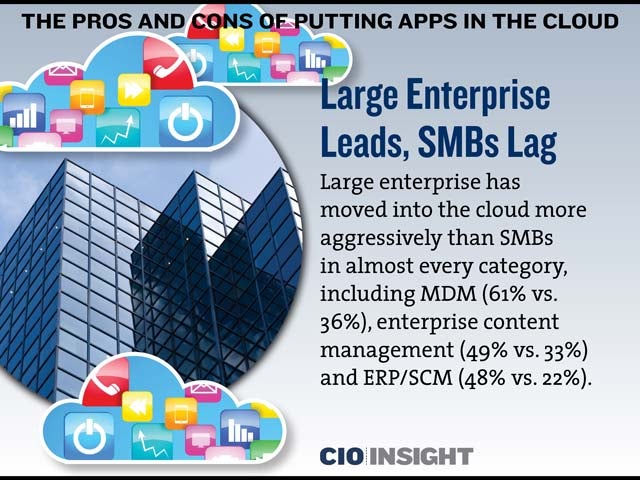 Large Enterprise Leads, SMBs Lag
Large Enterprise Leads, SMBs Lag
Large enterprise has moved into the cloud more aggressively than SMBs in almost every category, including MDM (61% vs. 36%), enterprise content management (49% vs. 33%) and ERP/SCM (48% vs. 22%).
 Large Enterprise and the Cloud
Large Enterprise and the Cloud
Among large firms, the top three enterprise cloud applications were: CRM/contact centers (63%), mobile device management (61%) and business analytics and big data apps (58%).
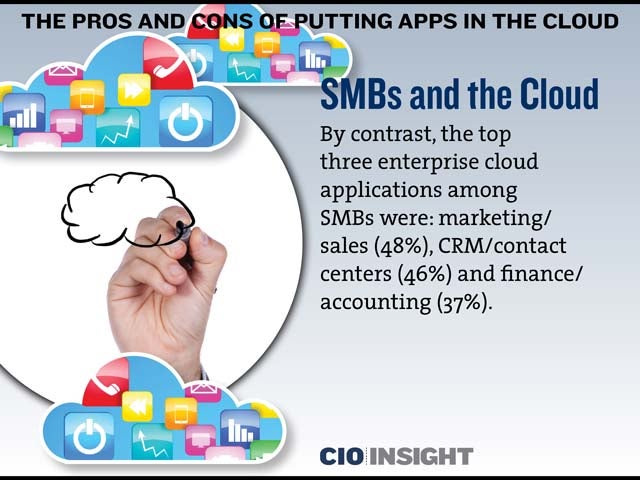 SMBs and the Cloud
SMBs and the Cloud
By contrast, the top three enterprise cloud applications among SMBs were: marketing/sales (48%), CRM/contact centers (46%) and finance/accounting (37%).
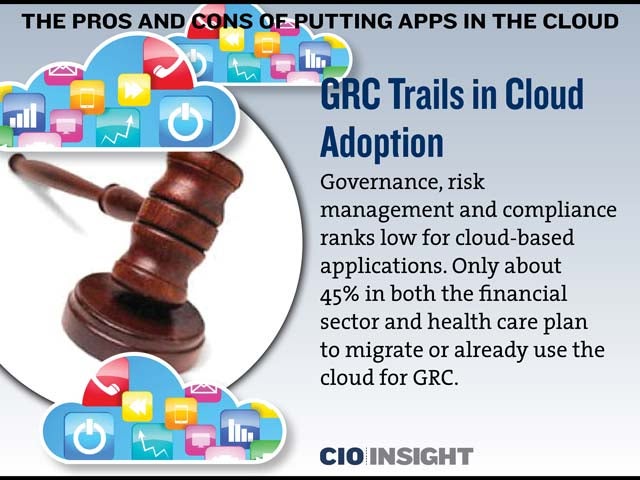 GRC Trails in Cloud Adoption
GRC Trails in Cloud Adoption
Governance, risk management and compliance ranks low for cloud-based applications. Only about 45% in both the financial sector and health care plan to migrate or already use the cloud for GRC.
 Government View
Government View
56% of executives in the government sector reported that they either don’t use clouds or don’t have plans to migrate to the cloud.
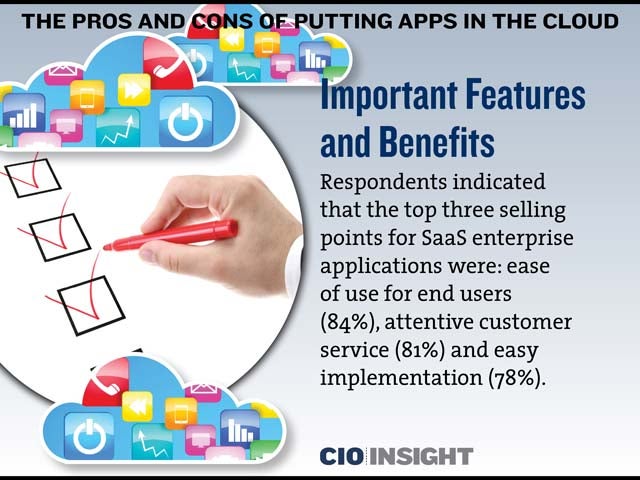 Important Features and Benefits
Important Features and Benefits
Respondents indicated that the top three selling points for SaaS enterprise applications were: ease of use for end users (84%), attentive customer service (81%) and easy implementation (78%).
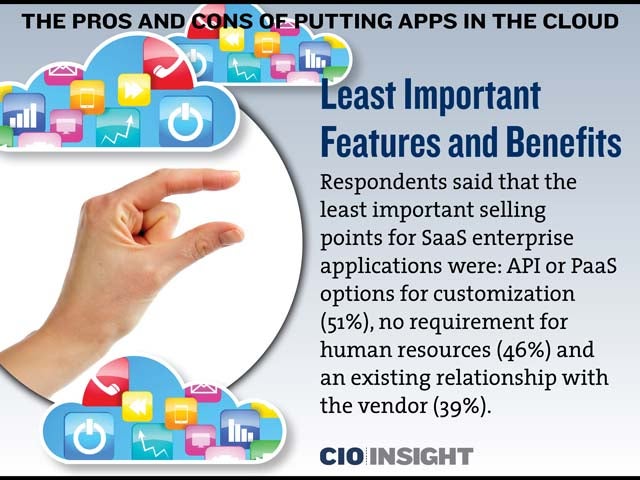 Least Important Features and Benefits
Least Important Features and Benefits
Respondents said that the least important selling points for SaaS enterprise applications were: API or PaaS options for customization (51%), no requirement for human resources (46%) and an existing relationship with the vendor (39%).
 Business vs. IT
Business vs. IT
80% of respondents indicated that line-of-business executives have final purchase authority. About 71% said that business requirements trump technical requirements when choosing enterprise applications.
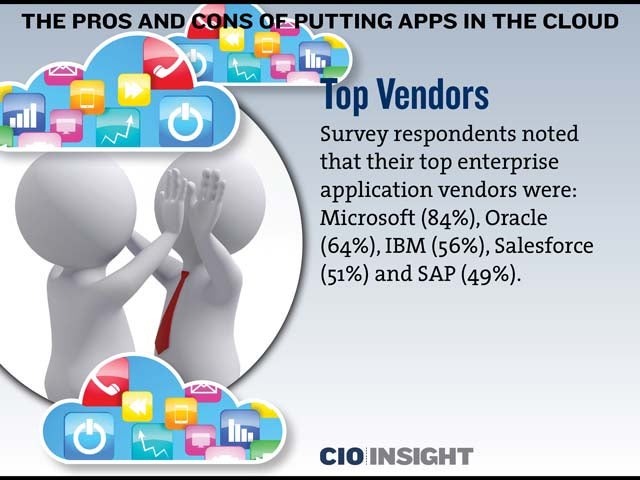 Top Vendors
Top Vendors
Survey respondents noted that their top enterprise application vendors were: Microsoft (84%), Oracle (64%), IBM (56%), Salesforce (51%) and SAP (49%).